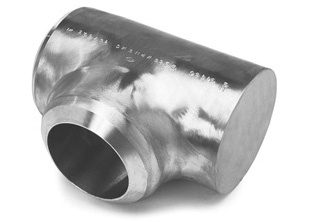MikePAMechEng
Mechanical
I'm working on a heat exchanger fabricated from 90/10 CuNi (likely changing to 70/30) that includes a sharp elbow in the piping leading to/from the core. The elbow is essentially one pipe tee'd into another, like a branch flow coming into the run of a tee, only there is no run. There isn't room to put in a radiused elbow. We will be doubling the water flow rate through this piping to increase the thermal capacity of the HX. I'm looking for any reference to velocity flow or any experimental data on this type of fitting to help estimate erosion rates. I've found some things for short radius elbows, but nothing for a mitered elbow or this specific type of geometry.
Right now I plan to base the acceptable flow on the allowable wall shear stress for CuNi and assume a 60% increased wall shear due to the elbow. The 60% comes from experimental data showing increased wall shear in tubing entrances. The flow around this tight elbow will also have some contracted area with higher velocity and wall shear, but I wanted to find better data than just using the tube entrance value. Short radius elbows seem to have (max velocity)/(average velocity) ratios of ~1.6-2, at least in what I've found.
Has anyone looked at this before or seen any good references?
Thanks
Right now I plan to base the acceptable flow on the allowable wall shear stress for CuNi and assume a 60% increased wall shear due to the elbow. The 60% comes from experimental data showing increased wall shear in tubing entrances. The flow around this tight elbow will also have some contracted area with higher velocity and wall shear, but I wanted to find better data than just using the tube entrance value. Short radius elbows seem to have (max velocity)/(average velocity) ratios of ~1.6-2, at least in what I've found.
Has anyone looked at this before or seen any good references?
Thanks

